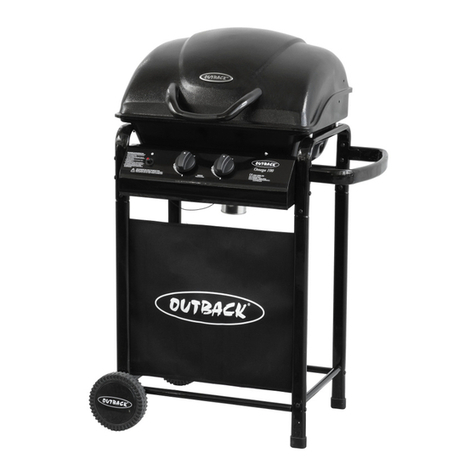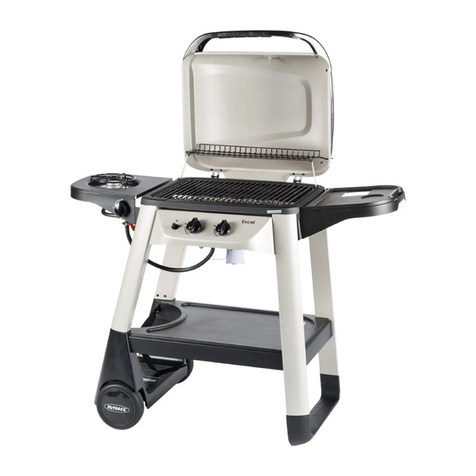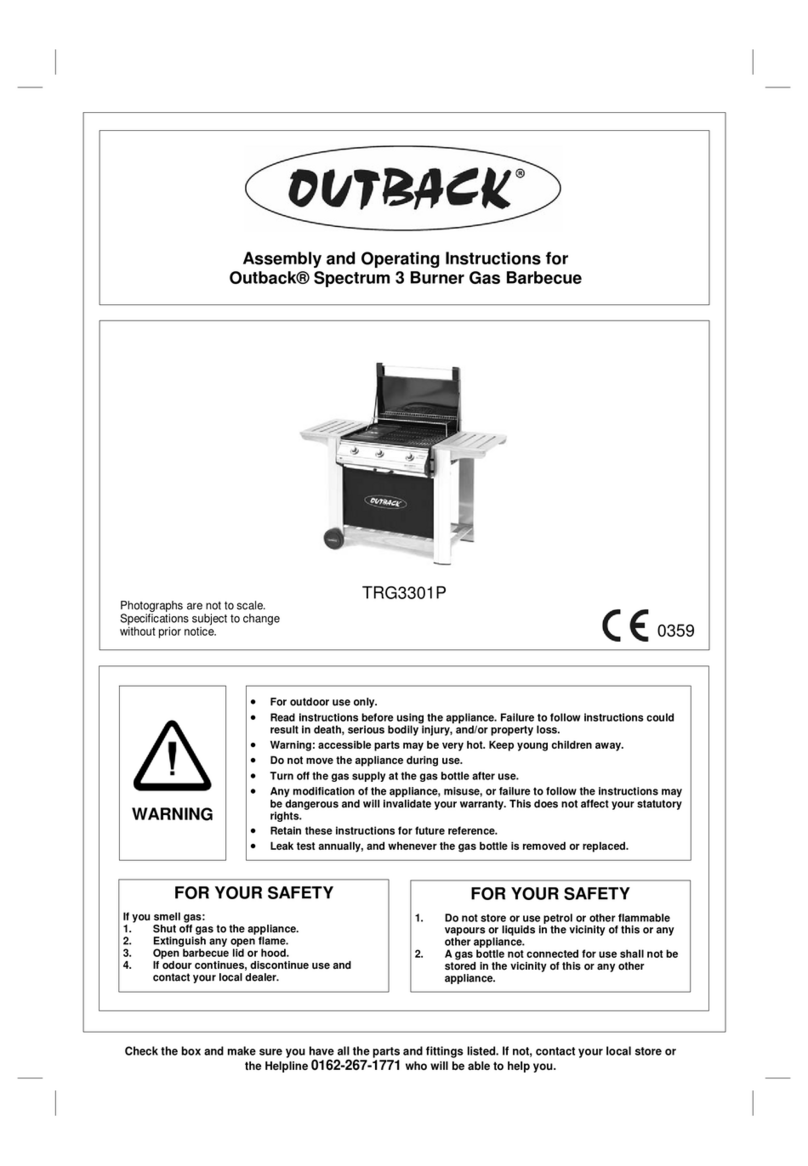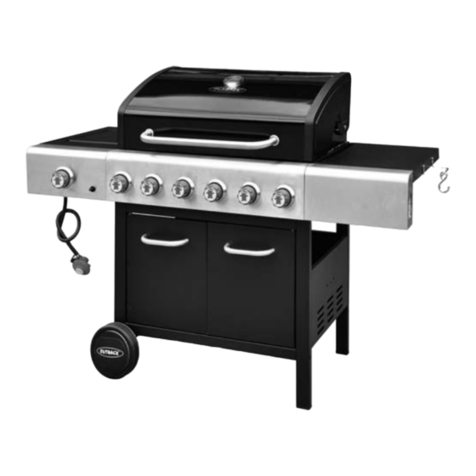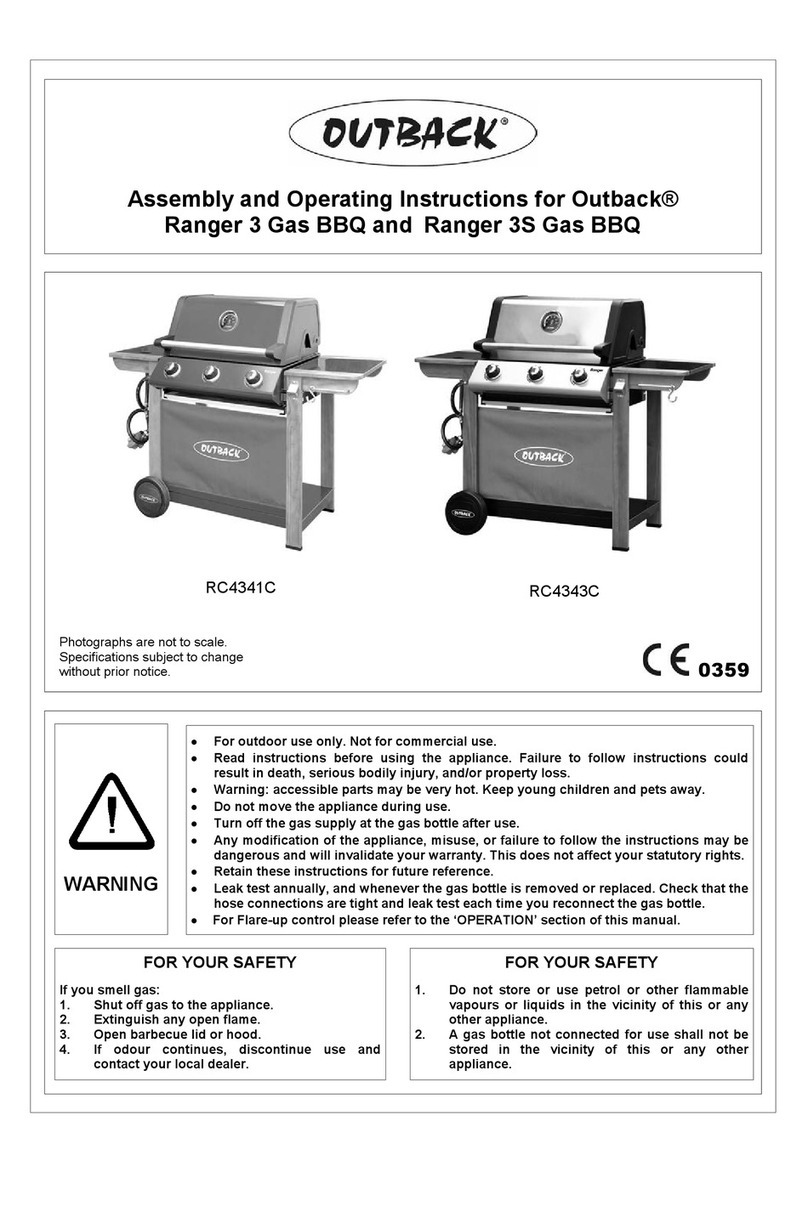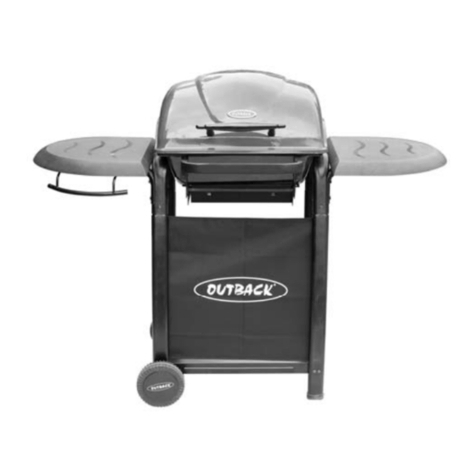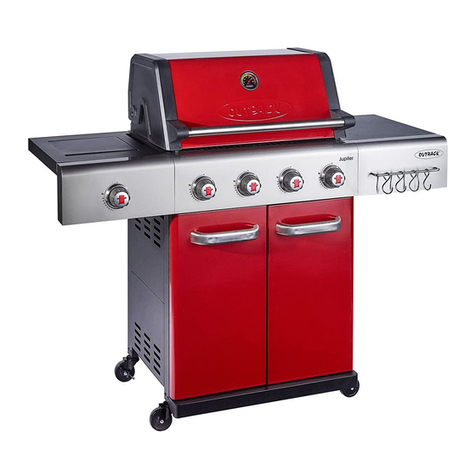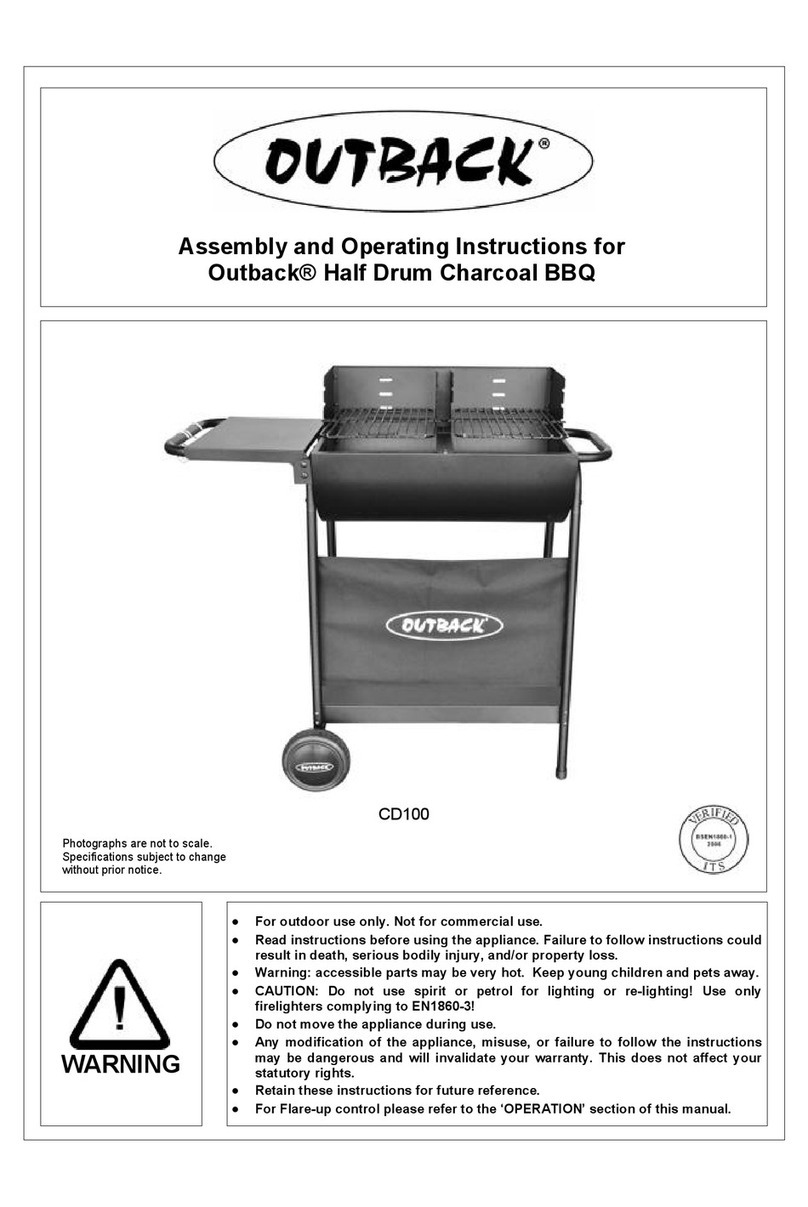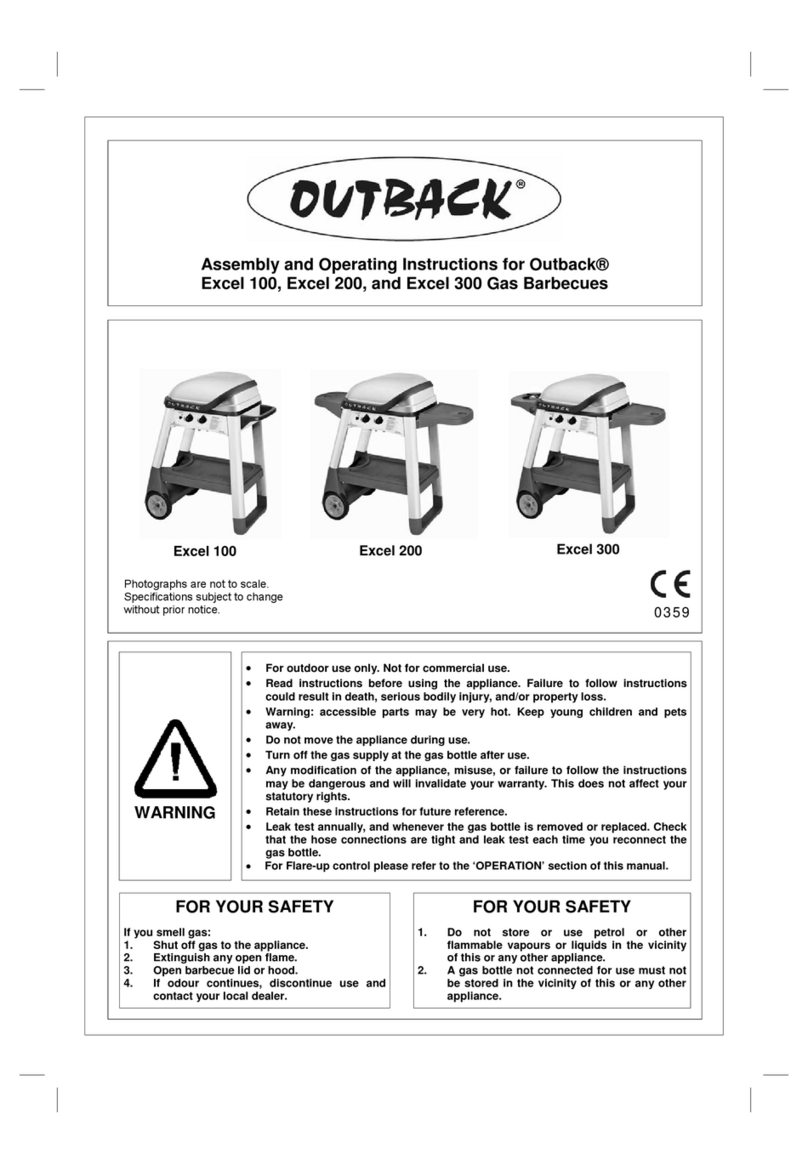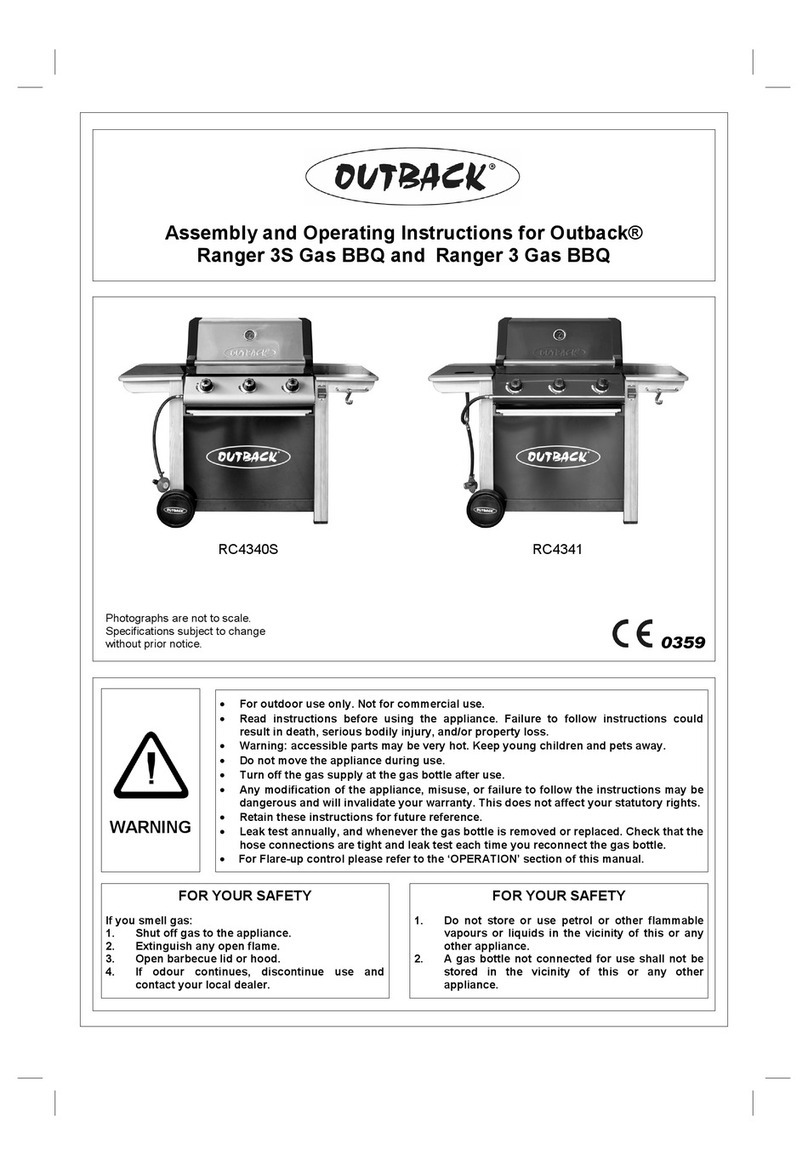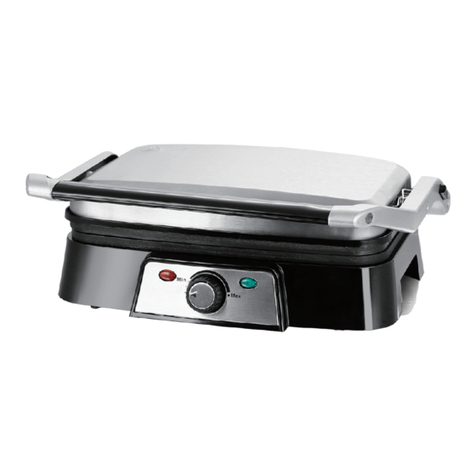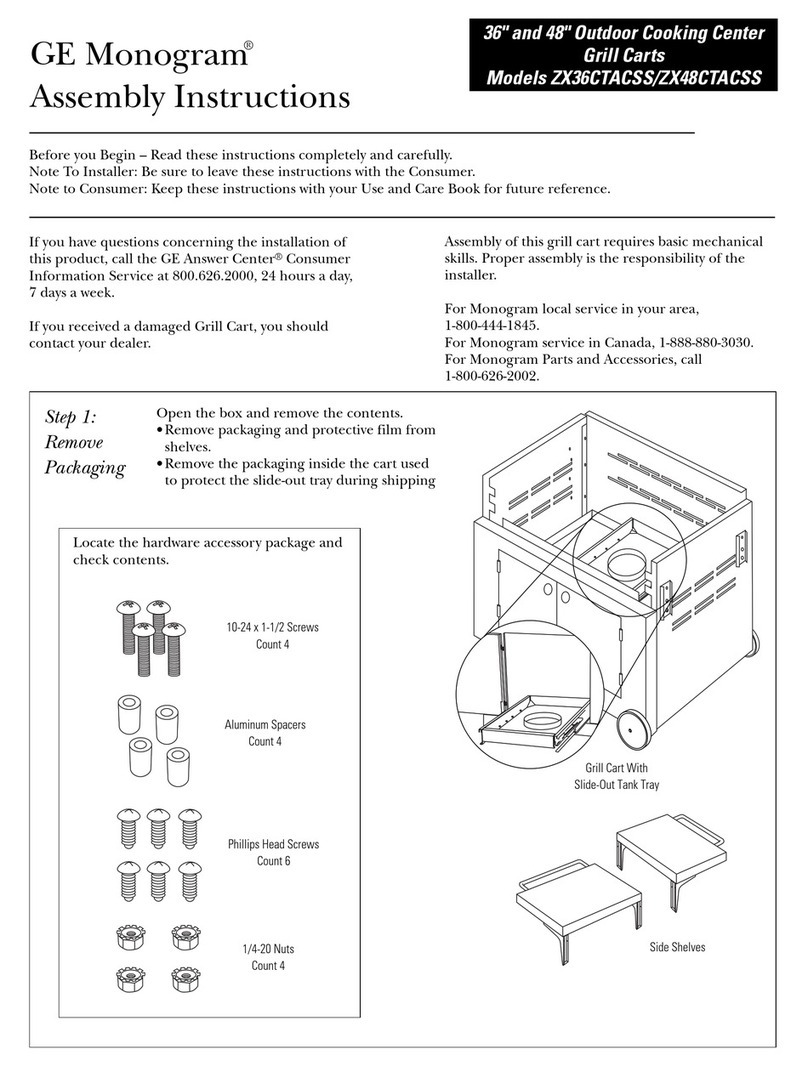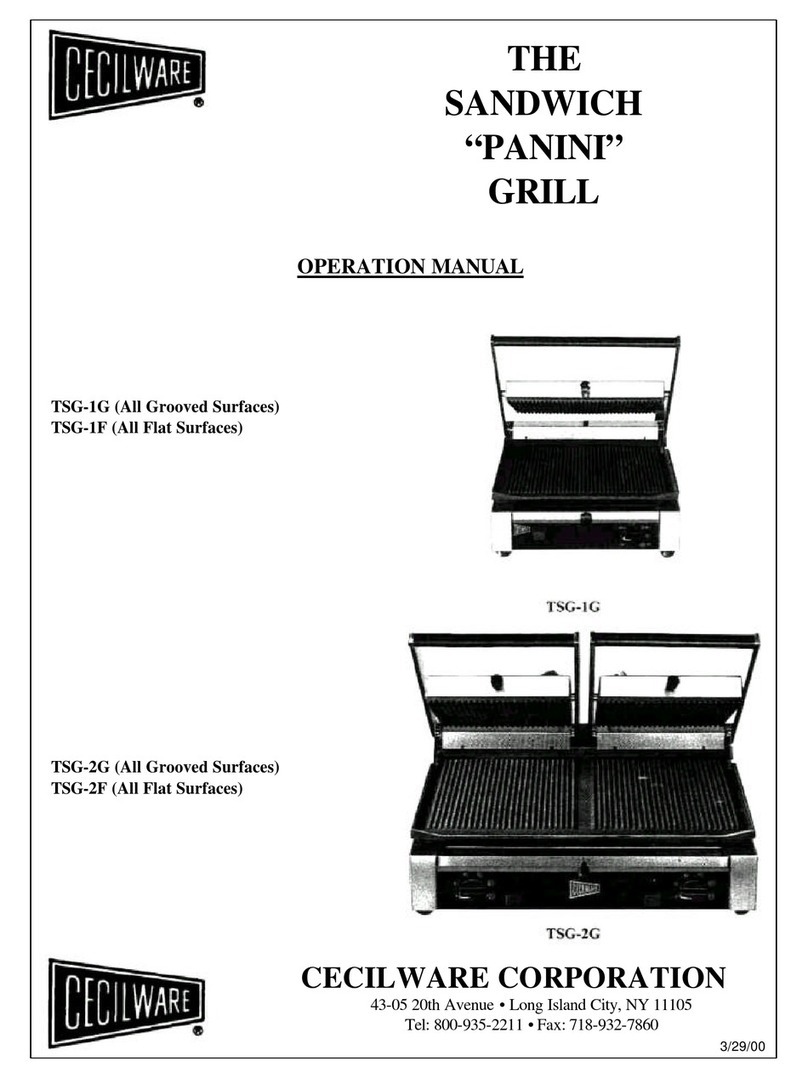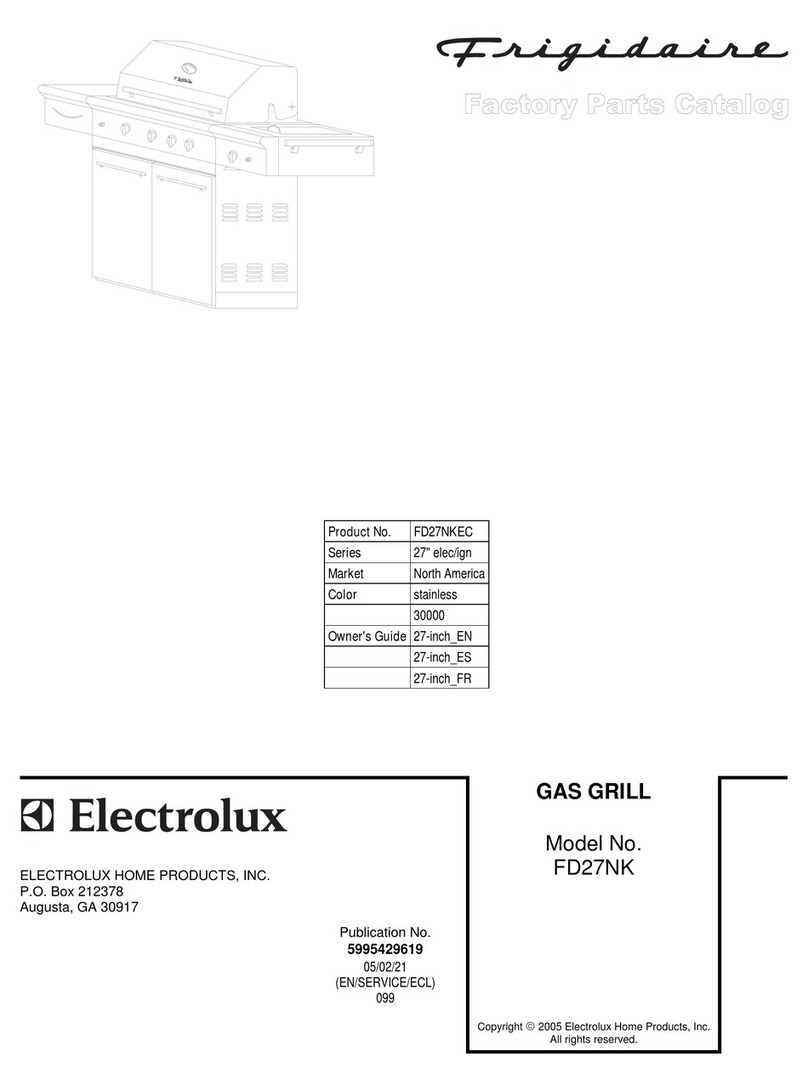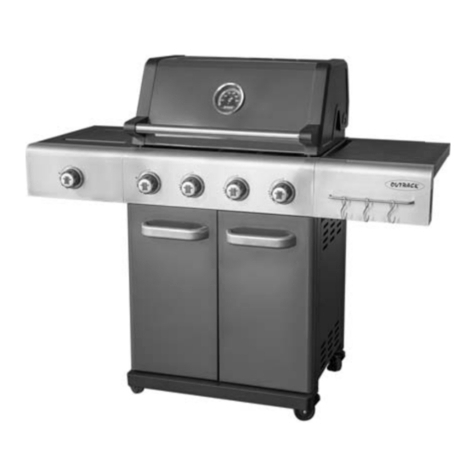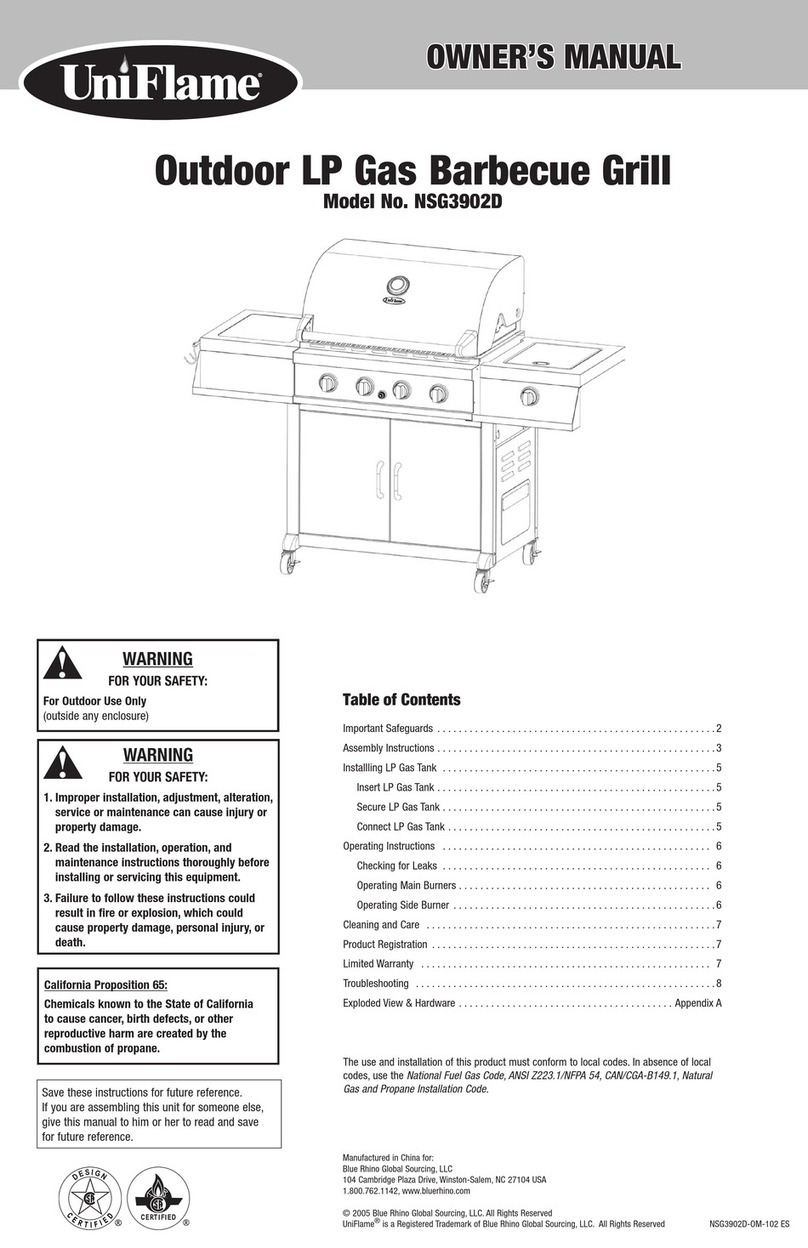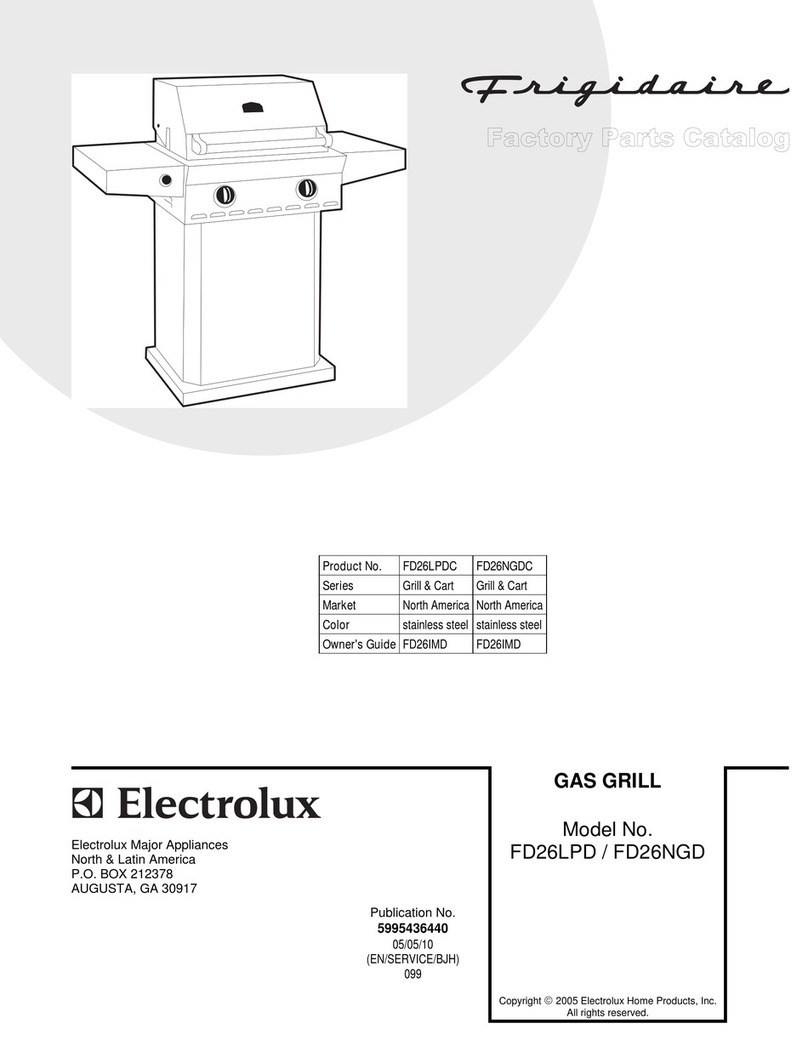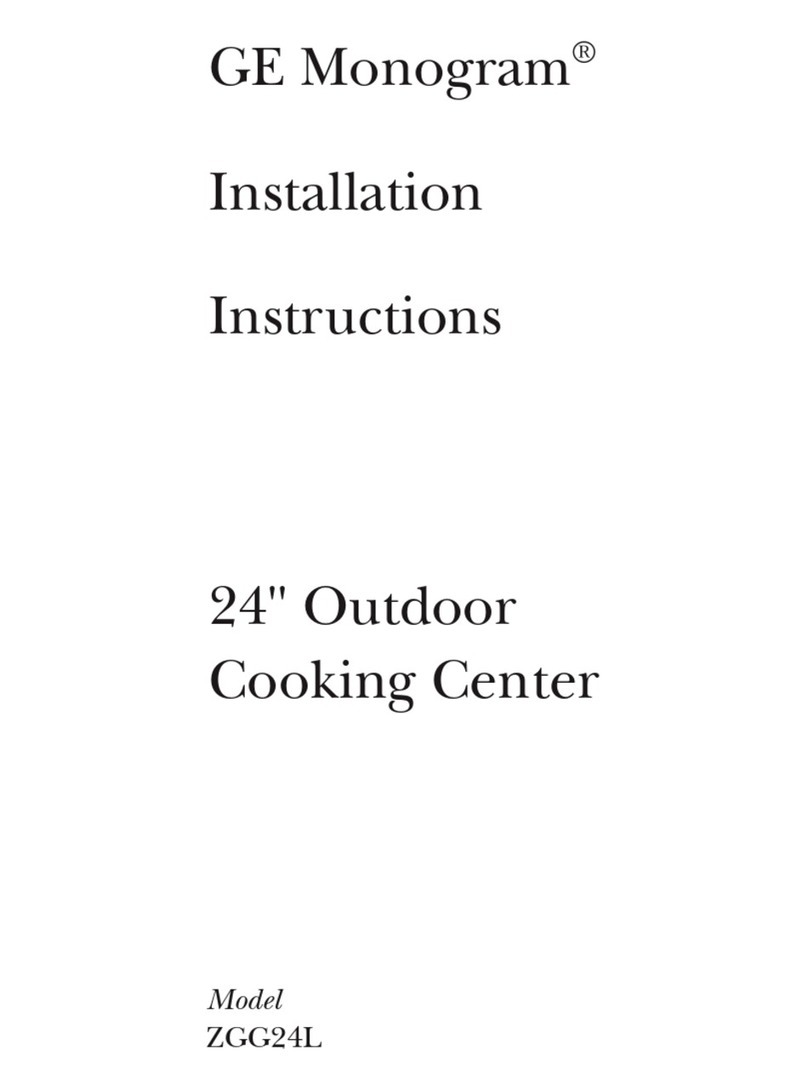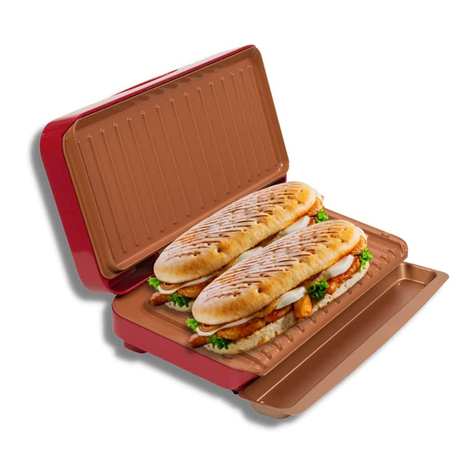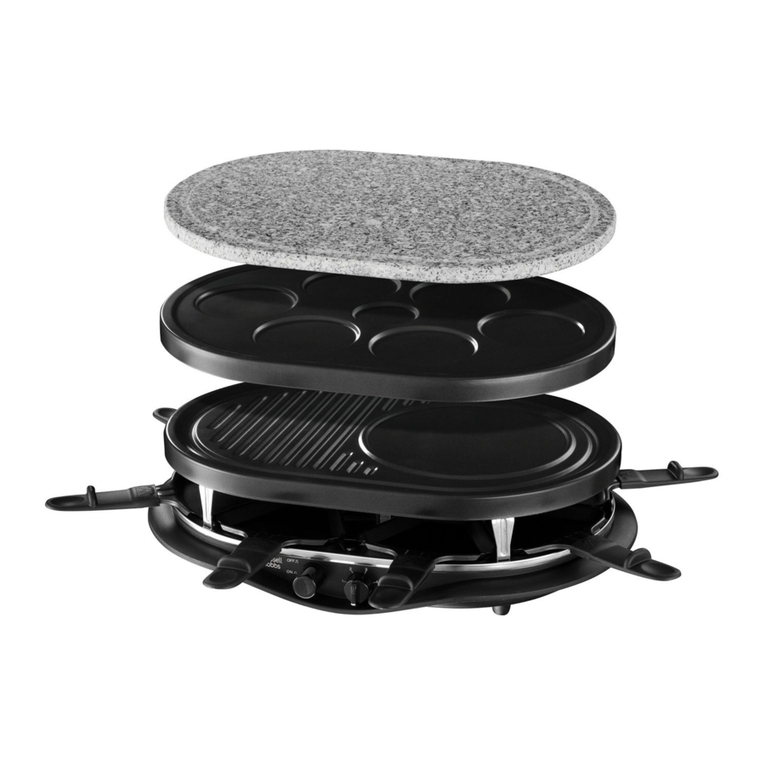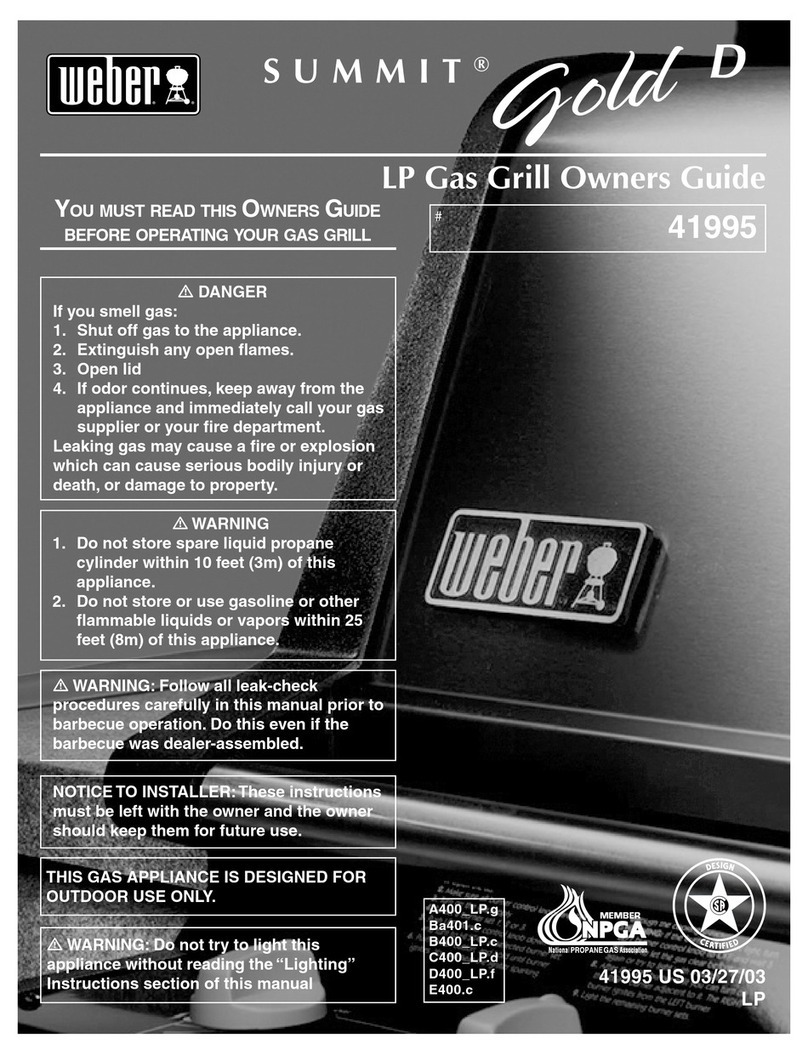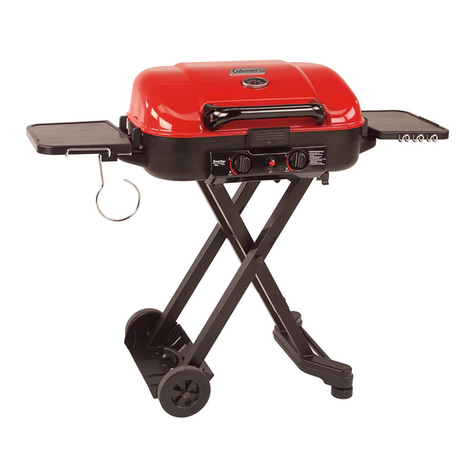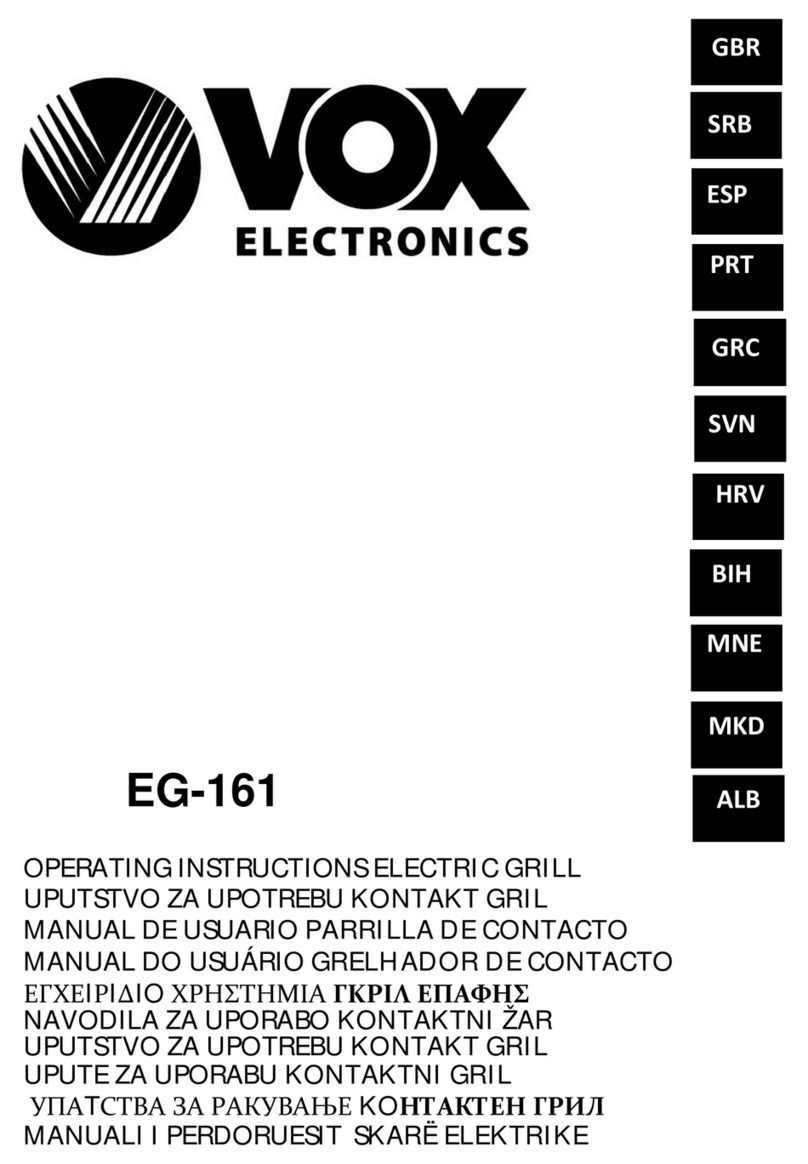12
• After lighting, turn the burners to the high
position for 3-5 minutes in order to pre heat
the barbecue. This should be done before
each cooking session. When pre heating is
complete, cooking can begin, taking extra
care if burners are left in the high position.
H5. Grill Cooking
The burners heat the briquettes beneath the grill
that, in turn, heats the food. The natural juices
produced during cooking fall onto the briquettes
and vaporise to form smoke. The smoke then
rises and ‘bastes’ the food, giving it that unique
barbecued flavour.
When using your barbecue for grill cooking you
may wish to place the hood in the closed
position which will hold the heat in to aid
cooking.
H6. Griddle Plate Cooking
The burners heat the griddle plate directly, which
then cooks the food on contact. Plates allow for
the cooking of smaller items, such as seafood,
which could fall through the spaces of a grill.
They are also suitable for cooking items that
require high-temperature/short-duration cooking,
such as vegetables and smaller cuts of fish.
Similarly, it can be used in exactly the same way
as a griddle in the kitchen, for searing steaks,
cooking eggs, etc. Alternatively, it can be used
for heating pans or keeping food warm.
H7. Warming Rack.
Warming racks are a convenient way to keep
cooked food warm or to warm items such as
bread rolls. Care should be taken to ensure that
any items placed on the warming rack are
cooked through and do not continue to cook and
drip fat or meat juices, which could drip onto the
lid and down the back of the barbecue.
H8. Roasting Hood Cooking
Barbecues equipped with a roasting hood give
the option of cooking with hood closed to form
an ‘oven’ for roasting food, such as joints of
meat, whole chickens, etc.
When roasting, turn the burner directly under the
food to the OFF position. Turn all other burners
to a LOW to MEDIUM position and close the
hood. Avoid lifting the hood unnecessarily as
heat is lost every time the hood is opened. Use
the temperature gauge to check the heat of the
barbecue. DO NOT ALLOW YOUR BARBECUE
TO OVERHEAT.
H9. Rotisserie Operation Instructions
1. Carefully remove the cast iron cooking
surfaces and the warming rack from the
barbecue.
2. Slide one of the spit forks onto the spit rod
and tighten its thumb screw to secure it into
place. Insert the pointed end of the spit rod
into the meat being cooked and slide the
meat towards the center of the rod. Make
sure the fork is fully into the meat. Slide the
other fork onto the rod, into the meat, and
tighten the thumb screw once in place. For
optimal rotisserie cooking, food must be
placed securely onto the middle of the spit
rod and balanced so that the rotisserie can
rotate freely without interference from any
barbecue surfaces. Any loose sections of
meat should be secured so they do not
hang down and interfere with the rotation of
the spit rod.
3. Insert the pointed end of the spit rod into the
motor. Lay the other end of the spit rod onto
the opposite bracket.
4. Light the grill as specified in your barbecue’s
instructions.
5. Turn on the rotisserie motor to begin
rotisserie cooking. The hood has been
designed so that it may be closed during
rotisserie cooking.
6. Always cook foods on the lowest flame
setting to avoid burning or overcooking.
H10. Flare-Up Control
Flare-ups occur when meat is barbecued, and its
fat and juices fall upon the hot briquettes.
Smoke helps give food its barbecued flavour, but
avoid excessive flare-up to prevent food being
burned. To control flare-up, it is advisable to trim
away excess fat from meat and poultry before
grilling. To reduce flare-ups, the burners should
be turned down to the low setting. Flare–ups can
be extinguished by applying baking soda or salt
directly onto the briquettes. Always protect your
hands when handling anything near the cooking
surface of the barbecue. Flare-ups occur more at
the start of cooking, particularly with processed
meat products, and it may be necessary to turn
the burners down to their lowest setting to start
with and then turning up at a later stage in the
cooking process. The barbecue should also not
be overloaded. Some parts of the cooking area
are hotter than others. The hottest areas will be
above the burners which will be where the flare
ups will normally start. By leaving free space you
can simply move the food away from the flare up
to a cooler area until the flare up has subsided.
If a fat fire should occur in the drip tray, turn all
knobs to the off position, turn off the gas at the
bottle, and wait for the fire to go out. Do not pull
out the drip tray or douse with water.
















